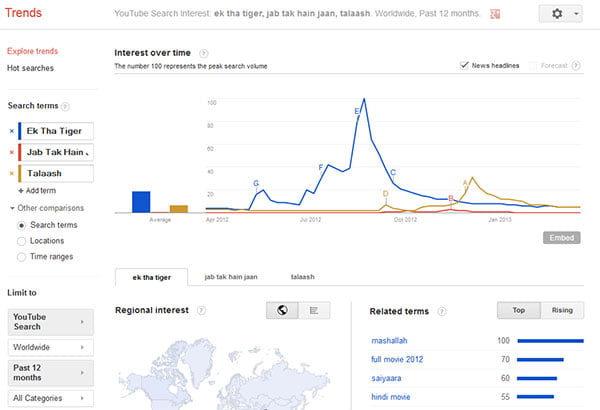

Google Trends can further help with on-page SEO by showing LSI keywords. This revolutionary AI uses mathematical systems to find the relationship between a word and its concept inside a piece of content. LSI is an acronym for “latent semantic index(ing)” - a computer program that has been designed to learn a wide array of synonyms based on context.

Tap into LSI keywordsįinally, let’s bring an often-overlooked SEO aspect to our attention: tapping into LSI keywords. Just be careful not to focus too much on keywords that are short-term blips. So, while you won’t be getting specific keywords, you’ll get an insight into trending searches: real-time data for searches that spiked in the last 24 hours. Results found in these help pinpoint popular topics and queries from different segments of a potential market. “Interest by Subregion” can help filter and hone in on the geographic areas with the highest demand for products, strengthening and sharpening a SEO strategy. While you may live in the same country as millions of others, keywords can trend uniquely in different cities, states and subregions.įor instance, if you manufacture sports footwear and are considering rolling out a line of ice skates, Google Trends will show how search volume for this keyword varies from city to city and state to state. It would pay off even further to check out “Interest by Subregion” on Google Trends. As a business, you can use statistics on search activities to monitor, analyze and even predict whether a product, service or new idea will be acceptable to a local audience. As mentioned, conducting a “search” is often an act that accompanies the purchase of a product. This feature is fantastic for brick-and-mortar businesses that serve a local community. Once you’ve honed the specific keywords you want to rank for, you can create a list of blogs, videos or social media posts related to these topics. These broad topics are very useful for SEO because they can help you create content that anticipates new trends. “Rising” on the other hand, will get you results for those that are trending. If you toggle “Rising” and “Top”, you’ll find the latter will list topics that are consistently getting large amounts of monthly searches, even if they aren’t necessarily growing. This doesn’t present specific search terms, but offers a peek into broader topics that consumers are searching for. If you look to the left of the “Related Queries” table, you’ll notice another table called “Related Topics”. Google Trends can help you discover related keywords to a search, as previously discussed, but it can also provide insight into related topics to consider for future content.
#Google trends for youtube how to#
Related: How to Identify the Best Long-Tail Keywords 4. But for a few months’ worth of traffic and a coveted place atop Google Search results, it can be a smart move if made at the right time. It’s not recommended that you build a whole business model around them, because they will likely (and often quickly) fall from grace. These “Breakouts” often turn out to be fads. You can sit and relax atop the Google Search page if you’re fast enough. You should hop on that keyword as fast as you can because it might not have become competitive yet.

Don’t go reading the number wrong, however it doesn’t mean that the keyword is overused and hard to rank for - quite the opposite. Pay close attention to that, because it means that the keyword has increased more than 5,000%.

Sometimes, you’ll see that Google Trends replaces the percentage (%) search volume with the term “Breakout”. Both actions do a great deal of heavy market research lifting. You’ll find that Google Trends brings up keywords it considers closely related to the one you searched for, as well as list them in order of percentage popularity. Say you have your core term in mind search for it, then scroll down to the “Related Queries” table. Look for related keywordsĪnother powerful feature of Google Trends is its unique ability to recommend related keywords that are also growing in popularity. You might want in on those particular keywords, but it’s always helpful to tell them apart from the real trendsetters. This also allows you to identify seasonal keywords - those that spike in quarterly patterns.


 0 kommentar(er)
0 kommentar(er)
